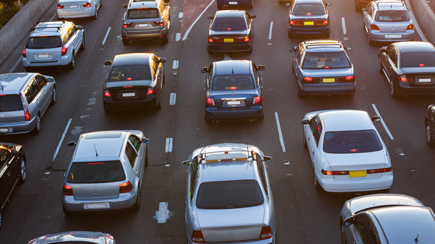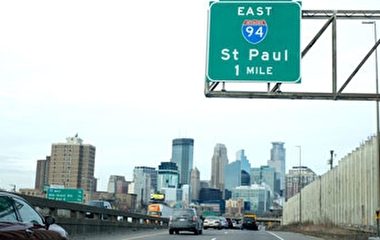Rear-end crashes are a major cause of highway traffic slowdowns, and preventing these congestion-causing incidents requires a clear understanding of why they occur in the first place. On the surface, it might seem like the driver who rear-ends another vehicle is the primary cause of the collision; however, the reality is much more complex.
In a new study, U of M researchers found that because shockwaves—areas of suddenly stopping or slowing traffic—are usually the cause of rear-end collisions on highways, drivers at the front of a group of cars may have as much or more to do with the rear-end collisions happening at the back of the group than those involved in the crashes themselves.
“The main goal of this research was to better understand how drivers behave when confronted with a stopping shockwave and why some shockwaves produce rear-end crashes but others don’t,” says Gary Davis, a professor in the U of M’s Department of Civil, Environmental, and Geo- Engineering. “The basic idea is that when a driver’s braking reaction time is longer than his or her following time, this increases the likelihood of a crash later in the shockwave.”
This project, conducted by Davis’s advisee Indrajit Chatterjee as part of his Ph.D. dissertation, combined that idea with applied probability theory to quantify the likelihood of a crash occurring under specific traffic conditions in a section of freeway. As part of his work, Chatterjee analyzed video recordings of 41 stopping shockwaves collected by the U’s Minnesota Traffic Observatory on I-94 westbound near downtown Minneapolis.
“This section of I-94 sees numerous rear-end crashes each year because drivers often fail to slow sufficiently when confronted with shockwaves that begin downstream at a high-volume entrance ramp,” Davis says. “We know that by reducing the frequency of rear-end crashes, we could significantly improve freeway capacity, particularly during peak hours.”
For each shockwave, Chatterjee examined key features of the drivers involved, including initial speeds, following headway (the time gap between the rear of the lead vehicle and the front of the following vehicle when the lead vehicle begins braking), average decelerations, and reaction times (the difference between the brake initiation time of the follower and the leader).
Using this data, Chatterjee successfully predicted which shockwaves would result in rear-end crashes. Next, he conducted a detailed analysis of two rear-end crashes to further illustrate how drivers with reaction times that are longer than their following headways play a key role in determining the crash outcome of a shockwave.
“These drivers could be considered unsafe, since they reduce the available stopping distance for succeeding drivers, making crashes more likely,” says Davis. “Results show that a significant portion of the drivers interacting in shockwaves do maintain shorter headways than their reaction times, meaning interventions that can successfully modify the reaction time–headway relationship should be able to reduce the frequency of rear-end crashes on freeways.”
Chatterjee and Davis believe this knowledge could be particularly useful in the design of smart vehicles. For example, future systems such as advanced cruise control features or automated vehicles should be designed so that a vehicle can maintain a following headway that is longer than its braking response time, reducing the likelihood of rear-end crashes.



